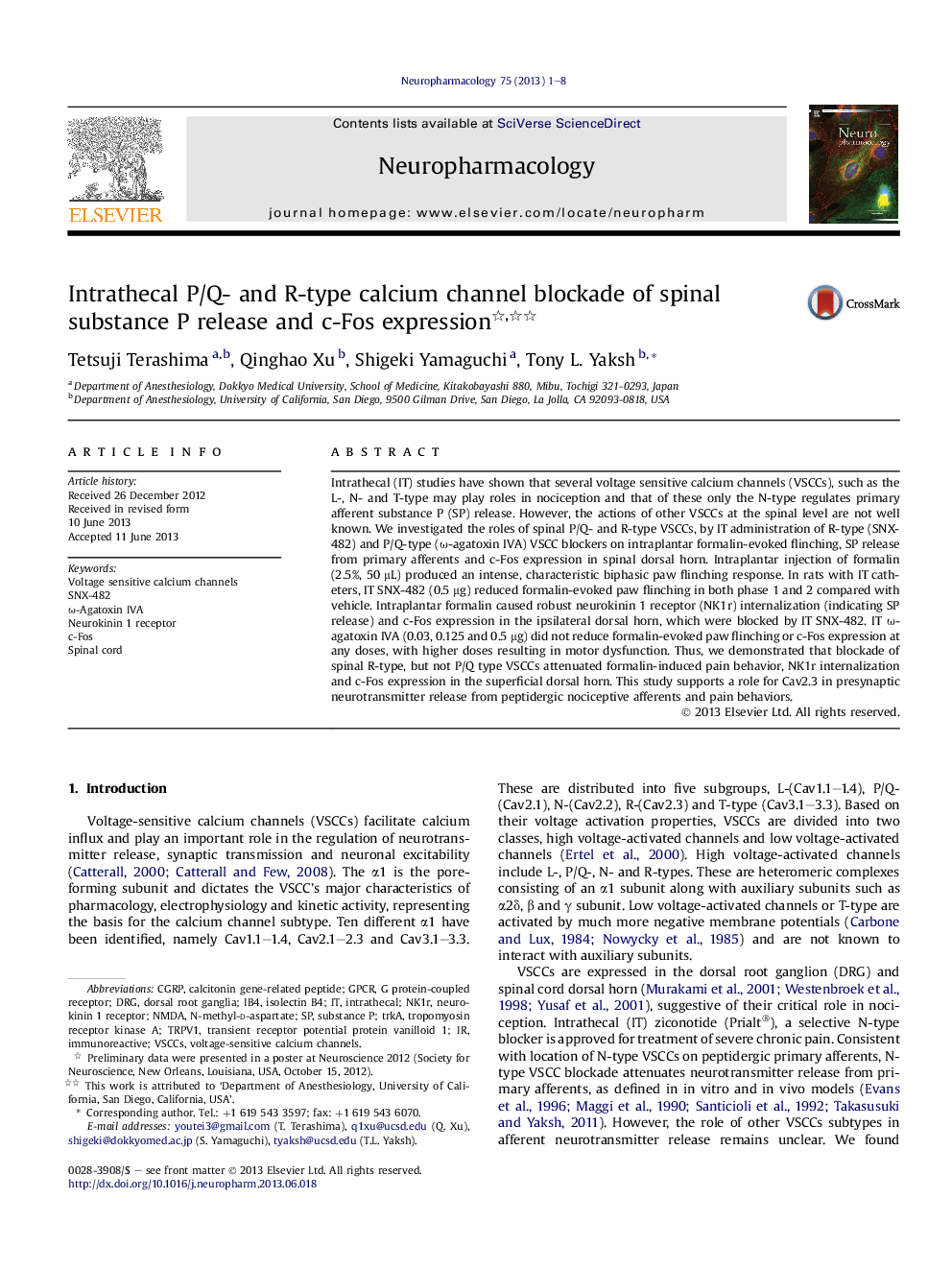| کد مقاله | کد نشریه | سال انتشار | مقاله انگلیسی | نسخه تمام متن |
|---|---|---|---|---|
| 2493336 | 1556638 | 2013 | 8 صفحه PDF | دانلود رایگان |

• IT SNX-482 (R-type antagonist) blocked formalin-evoked flinches in phase 1 and 2.
• IT SNX-482 blocked formalin-induced spinal dorsal horn NK1 receptor internalization.
• IT SNX-482 blocked formalin-induced spinal dorsal horn c-Fos expression.
Intrathecal (IT) studies have shown that several voltage sensitive calcium channels (VSCCs), such as the L-, N- and T-type may play roles in nociception and that of these only the N-type regulates primary afferent substance P (SP) release. However, the actions of other VSCCs at the spinal level are not well known. We investigated the roles of spinal P/Q- and R-type VSCCs, by IT administration of R-type (SNX-482) and P/Q-type (ω-agatoxin IVA) VSCC blockers on intraplantar formalin-evoked flinching, SP release from primary afferents and c-Fos expression in spinal dorsal horn. Intraplantar injection of formalin (2.5%, 50 μL) produced an intense, characteristic biphasic paw flinching response. In rats with IT catheters, IT SNX-482 (0.5 μg) reduced formalin-evoked paw flinching in both phase 1 and 2 compared with vehicle. Intraplantar formalin caused robust neurokinin 1 receptor (NK1r) internalization (indicating SP release) and c-Fos expression in the ipsilateral dorsal horn, which were blocked by IT SNX-482. IT ω-agatoxin IVA (0.03, 0.125 and 0.5 μg) did not reduce formalin-evoked paw flinching or c-Fos expression at any doses, with higher doses resulting in motor dysfunction. Thus, we demonstrated that blockade of spinal R-type, but not P/Q type VSCCs attenuated formalin-induced pain behavior, NK1r internalization and c-Fos expression in the superficial dorsal horn. This study supports a role for Cav2.3 in presynaptic neurotransmitter release from peptidergic nociceptive afferents and pain behaviors.
Journal: Neuropharmacology - Volume 75, December 2013, Pages 1–8